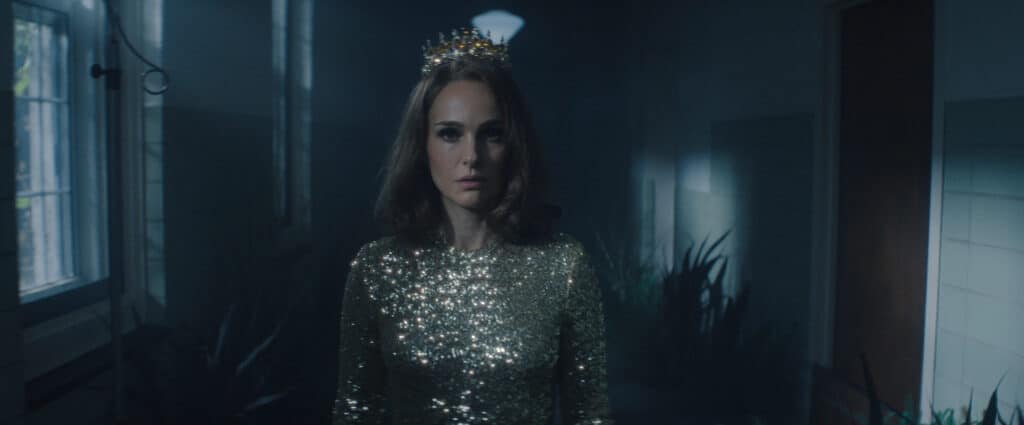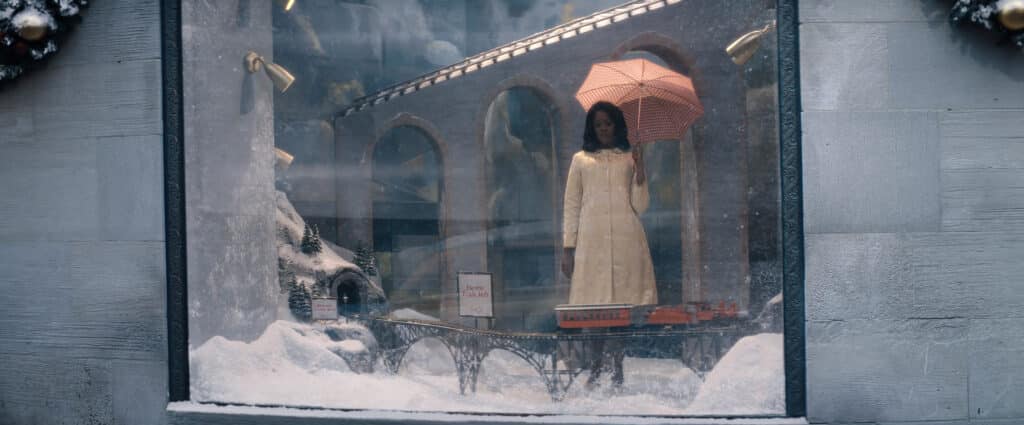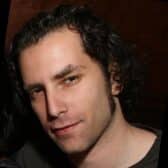
In the new Apple TV+ hit miniseries Lady in the Lake, a bored Jewish housewife transitions into a hard-hitting investigative reporter.
Set in 1966, in Baltimore, the Jewish community is shaken by the disappearance of a young girl, Tessie Durst. Maddie Schwartz (Natalie Portman) discovers Tessie’s body in a lake and is horrified. Her once-comfortable marriage to her affluent husband, Milton Morgenstern (played by Jewish actor Brett Gelman), becomes strained as Maddie pursues a career and independence. Their relationship further deteriorates when Milton learns that Maddie previously dated Tessie’s father, Alan.
Based on the novel by best-selling author Laura Lippman – a writer for The Baltimore Sun – Portman delivers a gripping performance in “Lady in the Lake,” keeping audiences on the edge of their seats and hungry for more.

From Jerusalem to gold
Born in Jerusalem and raised on Long Island, Portman is arguably Hollywood’s most famous Jewish actress, with leading roles in films such as “Black Swan,” “V For Vendetta,” “Star Wars Episode I: Phantom Menace,” and “Jackie.” She named her son Aleph and previously portrayed Anne Frank in a Broadway production of “The Diary of Anne Frank.”
“Lady in the Lake” was created and directed by Israeli-American filmmaker Alma Har’el. Portman shines as a woman consumed by a need to uncover the sinister forces behind Tessie’s murder, as well as the mysterious death of Cleo Johnson, a Black model whom Maddie knew. Cleo narrates the series from beyond the grave.
Har’el — who was born in Tel Aviv — is known for her work on Bombay Beach, which won Best Feature Documentary at the 2011 Tribeca Film Festival, and Honey Boy, which starred Jewish actor Shia LaBeouf, who has since converted to Christianity.
Antisemitism and racism In the series
“Lady in the Lake” explores themes of antisemitism and racism. In one scene, Maddie is told she “doesn’t look Jewish at all” as a compliment. The show also touches on growing antisemitism in Baltimore during this period.

Portman’s portrayal of Maddie is poignant, showcasing a woman who gradually finds her power not through the glamorous outfits we see her in initially but through her pursuit of truth and justice. Maddie is one of the few characters in the series who actively resists racism. She disregards the objections of other white women when she tries on dresses previously worn by Cleo. When she begins writing for the Baltimore Star, she insists on covering a story about a murdered woman “even though she is Black” but is met with resistance.
Moses Ingram delivers a stirring performance as Cleo, a woman who longs to use her intellect and voice, unaware of the tragic fate awaiting her. Maddie’s effort to wipe a stain off her dress serves as a metaphor for her desire to prove her own goodness in a society that harms Black women like Cleo with impunity.
One of the most volatile moments in the series occurs when a woman named Kasia calls Maddie a “Jewish bitch” and becomes violent. In another intense scene, crime boss Shell Gordon (Wood Harris) – who controls the numbers racket in Baltimore’s Black community – tells Maddie, “I respect the Jewish people. You’ve endured genocide. You’ve overcome racism. But in this country, in this city, white makes right, and as far as I’m concerned, that’s all you are.”
The series’ cinematography, acting, and costumes are all exceptional, although some violent scenes come unexpectedly.

Judaism in “Lady in the Lake”
Portman, who speaks Hebrew, accurately pronounces Yiddish and Hebrew words in the series, including macher (big shot) and l’chaim (to life). In one scene, Maddie accidentally serves lamb on dairy dishes, violating the laws of kashrut and ruining a dinner with a special guest.
The show also incorporates moments of humor. In the first episode, Tessie asks her mother how Santa Claus knows they are Jewish. Her mother explains that the mezuzah on their doorpost signifies their Jewish identity. When Tessie wonders what would happen if she stayed at her friend Mary’s house, her mother reveals that Santa isn’t real and that “Mary’s fat father” dresses up as him. Tessie, who wants a seahorse for Hanukkah, also tells a man at a fish store that at her school, Bais Yaakov, they don’t learn about fish, “just that God made them on Day 5.”
Natalie Portman helms “Lady in the Lake” to success
Portman is at her best in scenes with the deranged Stephan (Dylan Arnold), adding layers of tension throughout the series. In a particularly chilling moment, Stephan’s Polish mother tells Maddie that she is from Treblinka, which “was such a nice town.” She laments that after the death camp there, where between 700,000 and 900,000 Jews were murdered, people can no longer “speak its name.”
The mystery at the heart of the series keeps viewers guessing. Was the murder committed by a crime boss’s henchman, a mentally disturbed man, Cleo’s husband, a comedian named Slappy Johnson, or someone else? The show presents several plausible suspects, but the truth remains elusive.
“Lady in the Lake” is a captivating series that blends murder mystery with the story of a woman finding her voice. It also offers a window into how Jewish and Black Americans of that era viewed each other, as well as how they wished to be seen. The series begins strong and only gets better with each episode.
Originally Published Sep 10, 2024 02:25PM EDT


